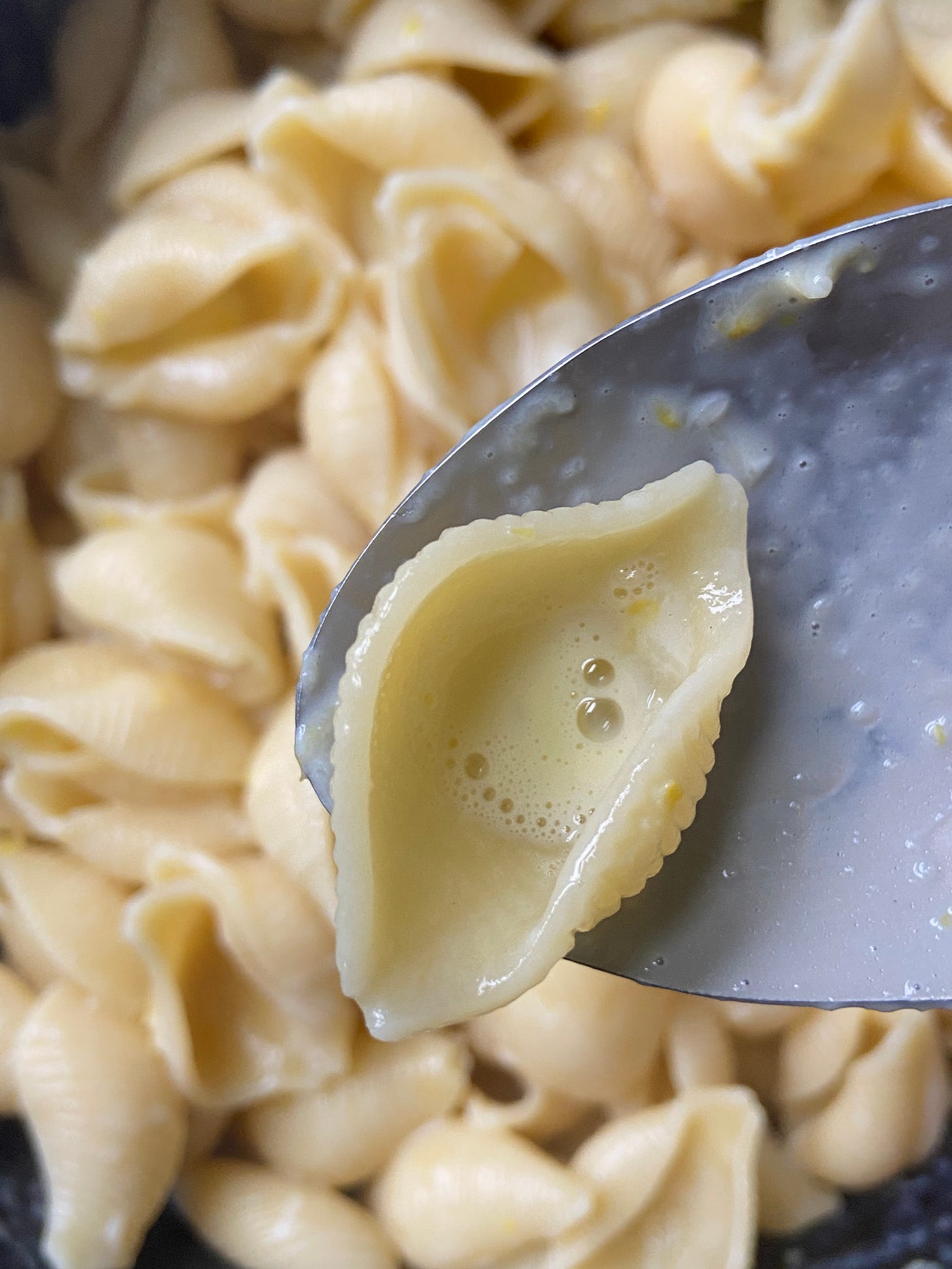As a kid I was only allowed pasta on Friday nights (can you imagine?) and would only ever pick Rao’s marinara or Giada’s lemon pasta1. But now that I’m the one making dinner, I don’t always feel like grating the heap of Parmesan that Giada’s lemon pasta requires, and my stomach doesn’t always want to accept any form of dairy. I never have heavy cream anyways, and blending cashews is simply no.
Noodling on creamy lemon creamy lemon creamy lemon, one brain rummage found avgolemono, which in Greek literally means “egg-lemon” and refers to soup that’s simultaneously creamy and light from an emulsion of egg, lemon, and hot liquid. With less broth, this can be a sauce—kind of like hollandaise without so much butter, or a warm Caesar dressing? For pasta?
On warm pasta, a lemon-egg sauce is lush without being heavy, draped more in silk than velvet. Unclouded by dairy fat, the lemon can shine through, too. It’s verging on so light that I add a little butter at the end to keep it from being too ephemeral.
If you’re worried about the emulsion breaking, know that the starch in the pasta water helps stabilize it, and tempering the eggs with some hot pasta water helps keep the eggs from scrambling. It’s lemon pasta, a creamy lemon pasta, but with its irks—the grating, blending, Lactaid of it all—gone poof.
As with all dishes that deftly solve problems and taste delicious, this sauce is nothing new. It’s been a stand-in for dairy avoiders for a cool half a millennium.
In the United States, ordering avgolemono from a menu will get you a chicken soup, but the word also refers to a sauce. Its precursor is agristada, a tart, egg-based sauce that Iberian Jews used to accompany meat dishes to abide by kosher rules.2 (It was made with the acidic juice of unripe grapes before lemons were introduced in the 10th century.3) When the Jewish community was expelled from Spain during the Inquisition, agristada came with, including to Greece, where it evolved into avgolemono, and Italy, where it became bagna brusca (“sour bath”), a cold sauce for cold pasta to be eaten on Saturday.45
It’s not just my Geography major finally paying off. The origins of a dish are very often the result of populations adapting their culinary traditions to a new place’s cultural and natural resources. What people eat is linked to culture, environment, economy, and political power.6 Iberian Jews introducing agristada to Italy’s lemons and pasta. Somalis in the Pacific Northwest making sambuus with tortillas and salmon. Also jambalaya, gumbo, fry bread, adobo.
On and on—and on. Today big, geopolitical conflicts full of brutality and displacement continue to have everyday, human repercussions. Life, death, hunger, humanity. As an acknowledgement of this simple fact, all proceeds from today’s newsletter will be donated World Central Kitchen, an organization on the ground feeding people affected by humanitarian and environmental disasters.





